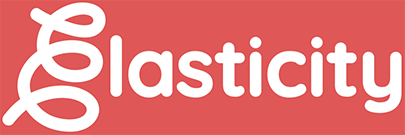During these increasingly unusual pandemic times, advertising dollars are beginning to look a lot like narwhals. It’s a scientific fact that they exist, but people either don’t believe you or they have no idea where to find them. But trust us, they’re out there—just maybe less than there were a month ago. A lot less, in fact.
So with brands and businesses being more cautious with ad spends, it’s more important than ever to make every dollar count and deliver results. With people spending more time online but spending far less than normal, it might be time to switch your targeting strategy from “how can we reach the most people” to “how can we reach the right people”.
Put a pin in your Facebook audience and take a break from trying to crack the code to TikTok virality, because we’re going to explore a few more niche platforms and services where your ad dollars might go further.
Quibi
The newest contender in the 2020 streaming wars, Quibi sets itself apart from other platforms by offering content developed to be viewed in both horizontal and vertical screen orientations. Taking a page out of the Spotify Vertical Video book, Quibi has made a valiant effort at cornering the market on mobile-based viewing.
With the name Quibi derived from their slogan “Quick bites, Big Stories,” all content is built around society’s ever-shortening attention span by catering to those who only have a quick moment here and there to tune in, generally from their smartphone.
As social distancing orders lengthen, people are beginning to tire of the same content across the same handful of platforms. By providing all original content ranging in a surprising array of genres, it creates a pull for both new customers and progressive brands looking to market to a more open-minded audience.
Garnering over 1.7 first week downloads and offering a 90-day free trial, advertisers now have a potential hotbed of viewership to tap into as time spent in isolation drives viewers to search for new content to fill their schedules.
Geocaching
Gaining traction as a trend on TikTok, many users have taken their followers on Geocaching adventures as a way to get out in a thoroughly non-intrusive way. With people looking for new ways to get out and be active, the activity is seeing quite the surge in popularity and is currently #4 on the App Store’s top navigation apps. But what exactly is Geocaching?
Basically a worldwide scavenger hunt, people who at one point in time had a lot of time on their hands decided to hide items (the cache) in plain sight with a log where people who have uncovered the item can write their names in victory. And then users put everything back (after it’s been thoroughly disinfected, of course) and leave it for the next player to find.
The trend is seeing a resurgence in popularity for a few reasons in particular:
- It’s an activity you can do alone, with children, or with those you’re quarantining with.
- With the challenge being in how well hidden the caches are, players are generally led to areas with a lower population density, reducing your risk of breaking any social distancing rules.
Brands can tap into the inherent activity of this app to replace nixed experiential marketing concepts. Ideas can range from hiding a coupon code as a cache for potential customers to find, all the way to something more educational like a brief summary of the wildlife present in the area of the hidden cache. So if your brand is looking to target an outdoor audience, this might be your best shot for the next few months.
Dating Apps
If people think social distance is going to put a damper on anyone’s love life, they obviously didn’t see a mistargeted EHarmony commercial on Nickelodeon every 20 minutes throughout their childhood. While it’s punishable by social media assassination to physically meet up with your online suitor, that doesn’t mean you can’t still talk to 10 at once.
Since COVID-19 became the supreme ruler of the land, Bumble has seen an 84% increase in voice calls and video chats, Tinder had its busiest swipe day on record (over 3 billion swipes left or right worldwide), and Animal Crossing villagers are beginning to start orchards together. Whatever that means.
With so many people craving human interaction and substituting it with virtual interaction, your ads will certainly get in front of enough eyes. Whether or not it ends up being a match is up to you.
Medical Websites/Weather Apps
I have visited WebMD no less than 30 times since I first heard the word “coronavirus,” and probably checked my weather apps 100 times more. With programmatic advertising suffering more than most other types, these sites are seeing an uptick in traffic not just for symptom checking and forecasting, but for those looking to stay up to date on the latest information.
The advantage of these sites is the wide audience range your ads can serve. It doesn’t necessarily matter that your brand has no connection with medicine or the industry, members of your target audience will still be frequenting these sites given the current social climate.
While more strategic than social, utilizing these domains and possibly partnering/sponsoring articles can get your brand in front of more people by anticipating where your audience will be spending their time for the next few months.
There is no magic formula of paid advertising, organic social, and ad spend allocation that will guarantee your brand a “get out of quarantine free” card. So being creative with where we are allocating our spending has ever been more important. At present times, a focus on building a connection with your audience can be more beneficial in the long run than focusing on the sale.
Casting a large net in the middle of the ocean might seem enticing because of the promise of possibility, but every once in a while we should try casting a smaller net in a crowded fish tank and see what we catch.



